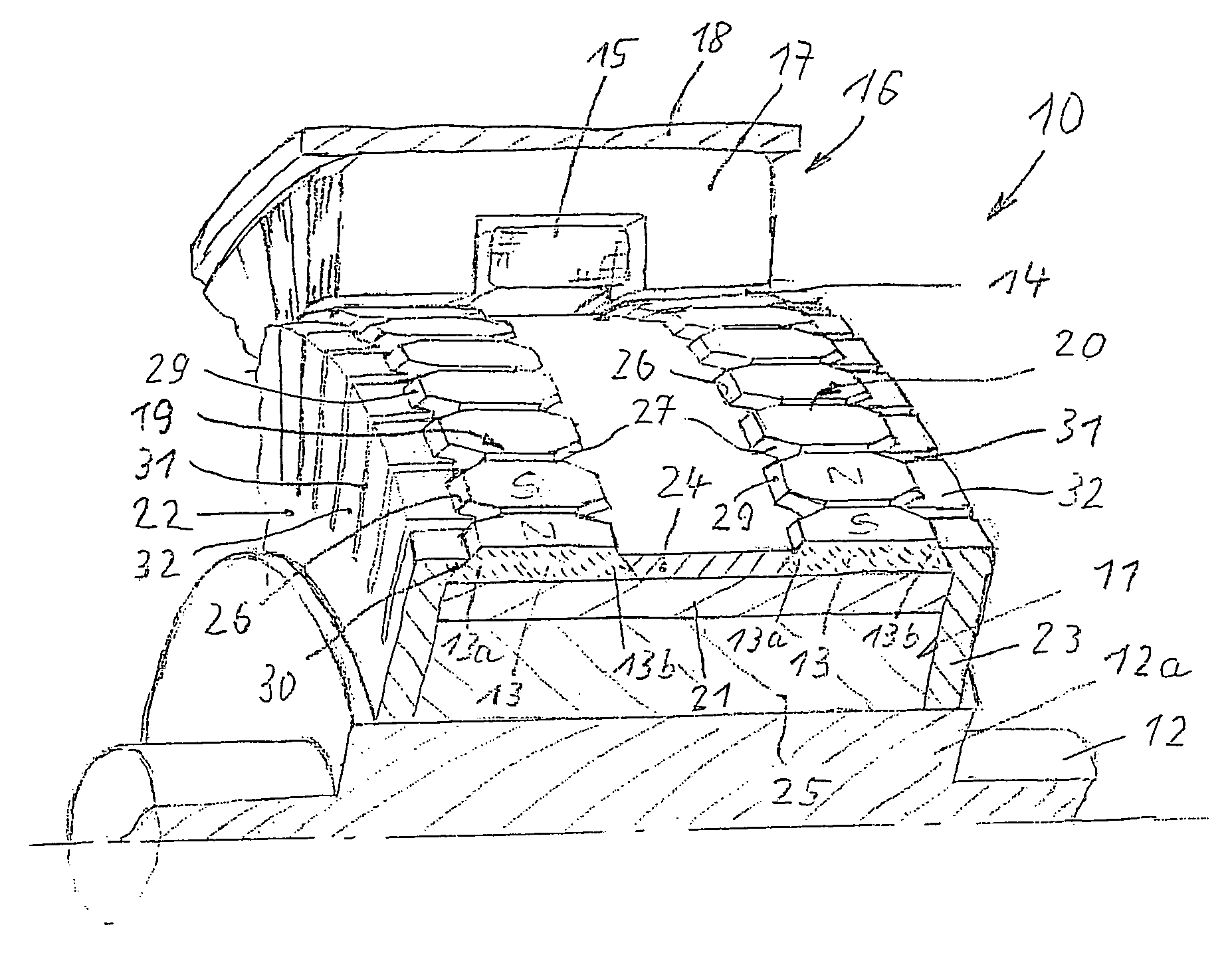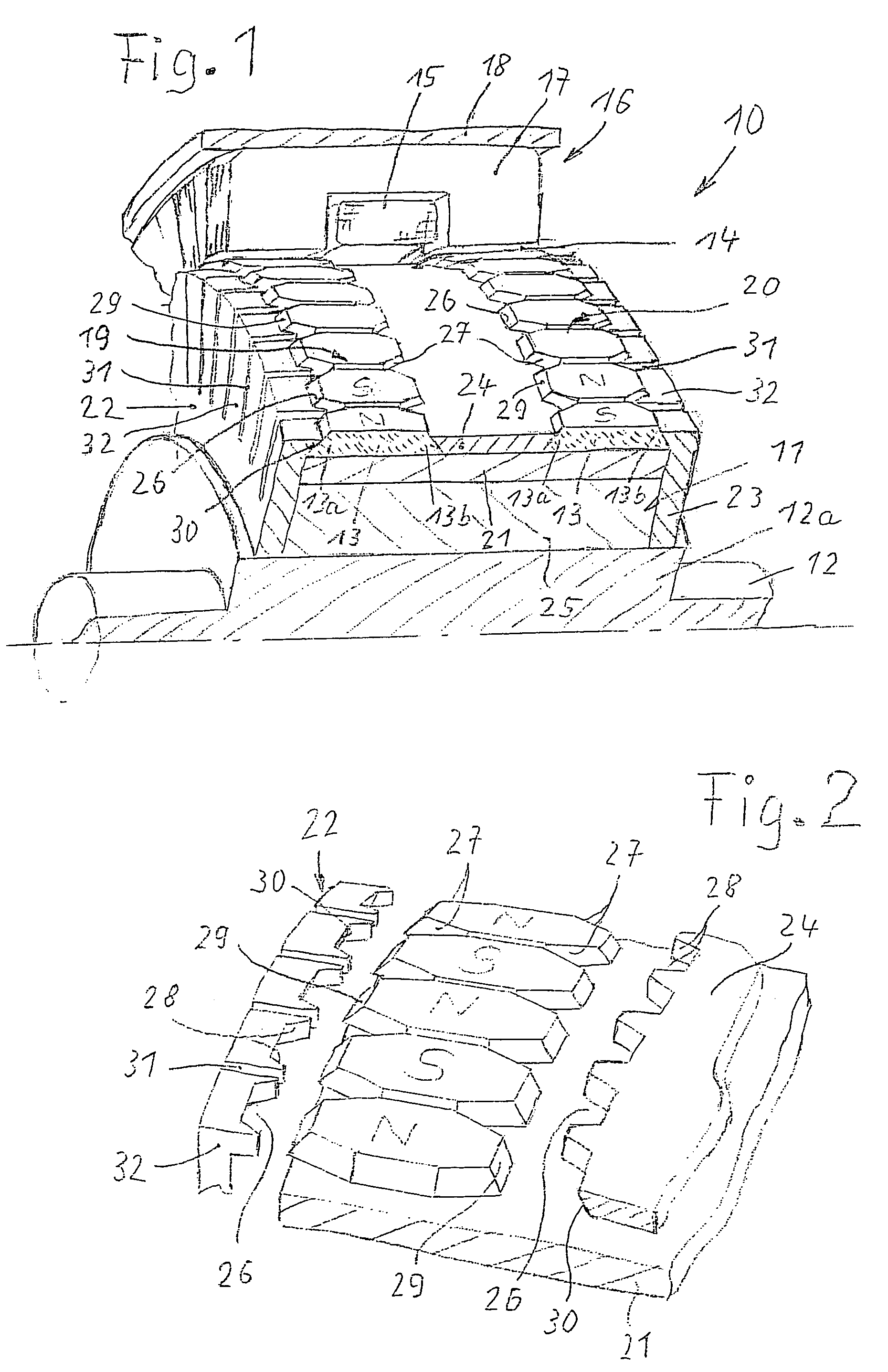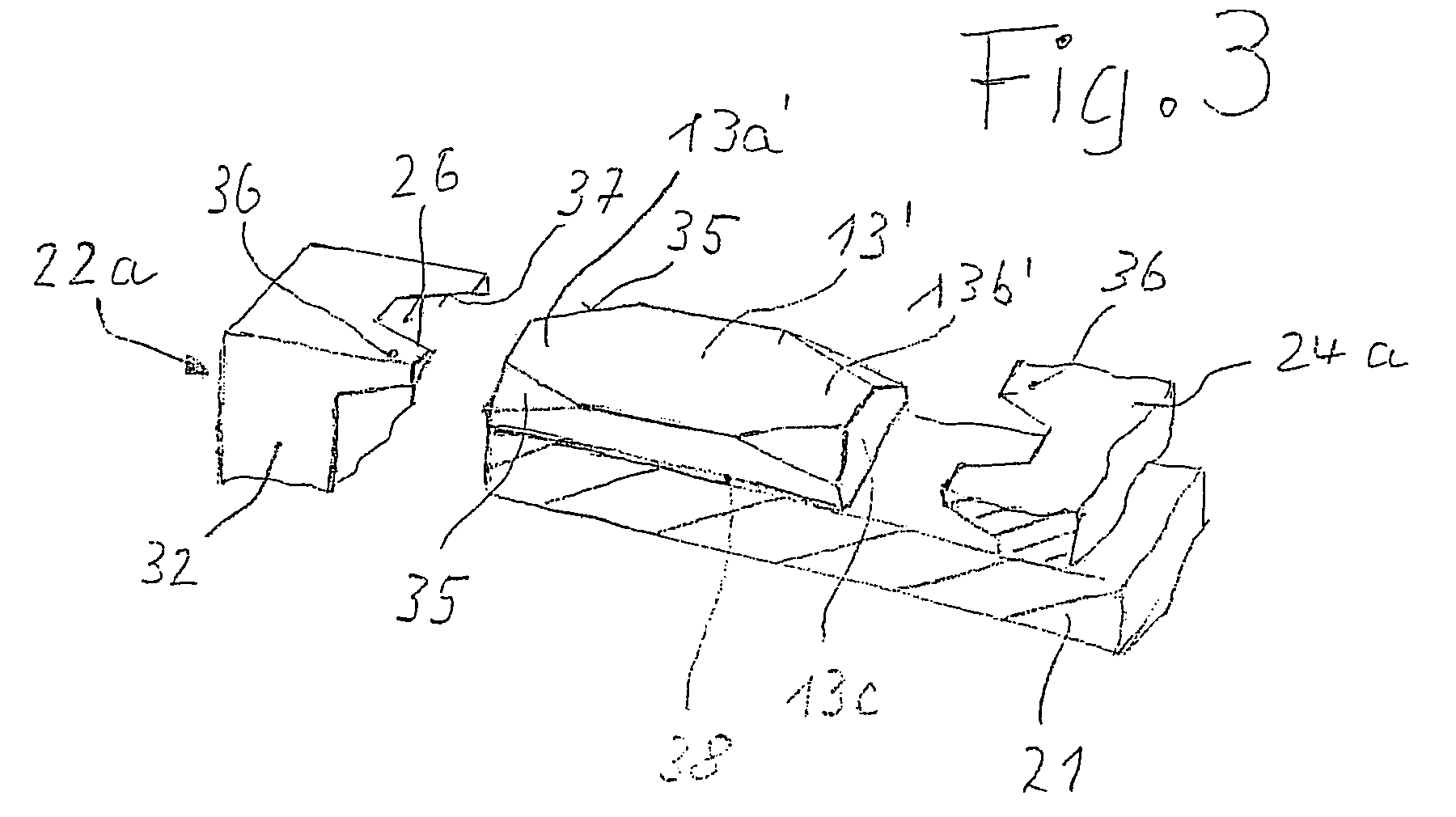Electrical machines, especially engines excited by permanent magnets
a technology of permanent magnets and electric machines, which is applied in the direction of dynamo-electric machines, magnetic circuit rotating parts, magnetic circuit shape/form/construction, etc., can solve the problems of requiring special magnetizing devices for magnetization, negative effect on machine output, and possible requirement of larger rotor diameters than would be necessary for machine output, etc., to prevent dangerous bending stresses, simple and rugged structural design of the rotor
- Summary
- Abstract
- Description
- Claims
- Application Information
AI Technical Summary
Benefits of technology
Problems solved by technology
Method used
Image
Examples
Embodiment Construction
[0020]In a longitudinal section that extends to the depth of the central axis, FIG. 1 shows a perspective breakaway view of an electrical machine 10 that belongs to the subgroup of transverse flux motors. The machine has a rotating rotor 11 with a rotor shaft 12. A number of permanent magnets 13 with alternating polarities are disposed around its circumference and the permanent magnets 13 are magnetized in the radial direction. The permanent magnets 13 cooperate across a working air gap 14 with an electrical annular coil 15 of a stator 16, which concentrically encompasses the rotor 11 and whose lamination bundles 17 on the one hand, are disposed opposite the permanent magnets 13 and on the other hand, encompass the annular coil 15 in a U-shape. The stator lamination bundles and annular coils are held and positioned by means of a corresponding yoke housing 18.
[0021]The permanent magnets 13 are arranged in two annular arrangements 19, 20 made up of individual magnets disposed next to ...
PUM
 Login to View More
Login to View More Abstract
Description
Claims
Application Information
 Login to View More
Login to View More - R&D
- Intellectual Property
- Life Sciences
- Materials
- Tech Scout
- Unparalleled Data Quality
- Higher Quality Content
- 60% Fewer Hallucinations
Browse by: Latest US Patents, China's latest patents, Technical Efficacy Thesaurus, Application Domain, Technology Topic, Popular Technical Reports.
© 2025 PatSnap. All rights reserved.Legal|Privacy policy|Modern Slavery Act Transparency Statement|Sitemap|About US| Contact US: help@patsnap.com



